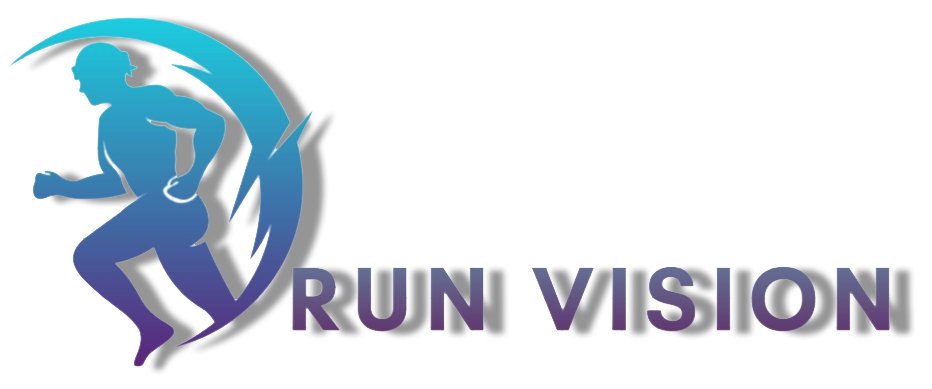Marathon Training Plans: From First-Time Runners to Seasoned Competitors
Training for a marathon isn’t just about running long distances — it’s about preparing your body and mind for 42.195 kilometers of sustained effort. Whether you’re chasing your first finish line or aiming for a new personal best, a structured training plan is the foundation of marathon success. And as with any endurance sport, tailoring that plan to your fitness level, timeline, and goals is key.

Let’s break down how to prepare for a marathon with purpose — from weekly schedules and session types to nutrition, strength work, and strategic tapering.
Why a Training Plan Matters
Running a marathon requires more than motivation. Without a clear framework, runners often overtrain, undertrain, or burn out before race day. A good marathon training plan:
- Builds mileage progressively
- Includes a variety of run types (speed, long, recovery)
- Integrates rest and strength training
- Aligns with your personal goals and available time
Modern training apps like Runna can generate personalised training blocks based on input like fitness level, current mileage, race date, and available time — making structured training more accessible than ever.
Personalised Training Plans for Every Level

Beginner Runners
If you’re training for your first marathon, focus on consistency. Beginners should start with three to four sessions a week, gradually increasing distance and frequency. The goal is to build aerobic endurance while avoiding injury.
Runna’s beginner plan emphasises:
- Progressive long runs
- Walk-run intervals if needed
- Planned rest days
- A slow mileage ramp-up across several months
Intermediate Runners
Those who’ve run 10Ks or half marathons will benefit from intermediate plans that introduce:
- Weekly mileage in the 40–60 km range
- Threshold and tempo sessions
- Hill efforts and longer midweek runs
This stage sharpens aerobic efficiency while still prioritising recovery.
Advanced and Elite Runners
Experienced marathoners — especially those chasing PRs — require more intensive programming:
- Long runs starting at 16–24 km
- Weekly mileage reaching 70–100 km+
- Specific goal-pace workouts
- Strength and mobility circuits
Elite plans include high-intensity intervals, race-pace simulations, and reduced rest periods to optimise physiological adaptation.
Choosing the Right Plan Length
| Plan Duration | Best For | Focus |
|---|---|---|
| 12 Weeks | Intermediate to advanced runners | Compressed high-intensity cycle |
| 16 Weeks | Most runners | Balanced progression and recovery |
| 19 Weeks | Beginners or returning athletes | Base building + full race prep phase |
The 16-week structure is widely accepted as ideal — allowing enough time to build mileage gradually, peak effectively, and taper properly without overwhelming the athlete.
Training Components That Matter
Speed Work: Tempo and Intervals
To improve race pace, incorporate:
- Tempo Runs: 20–40 minute efforts at controlled discomfort (approx. 80–90% max effort)
- Intervals: Repeated bursts (e.g., 6x800m) at high intensity with recovery in between
Both boost lactate threshold and running economy — essential for shaving minutes off your finish time.
Long Runs: The Endurance Engine
Once a week, schedule a progressively longer run — peaking at around 32–35 km. These teach your body to store and burn fuel efficiently, simulate mental fatigue, and condition joints and muscles for race-day volume.
Include occasional long runs at goal marathon pace for specificity.
Easy Runs: Low-Stress Gains
The most underutilised tool in a marathoner’s kit. Easy runs promote aerobic development while reducing injury risk. Follow the 80/20 principle: 80% easy running, 20% hard efforts.
The Role of Strength Training and Cross-Training
Running is high-impact. Strengthening the muscles that absorb shock is critical — especially the calves and quads, which bear forces up to 11x and 4x your bodyweight during a stride.
Benefits of Strength Training
- Improves running economy by 8–12%
- Reduces injury through muscular resilience
- Increases power and speed output
Combine 2–3 sessions per week, including:
- Squats, lunges, and single-leg stability work
- Core and glute activation drills
- Resistance exercises (bodyweight or gym-based)
Cross-training (cycling, rowing, swimming) can be used for aerobic conditioning while resting from impact.
Marathon Nutrition: Fueling for Performance
Training without proper fuel is like racing on an empty tank. Strategic nutrition supports both recovery and performance.
Everyday Nutrition
- Protein: Essential for muscle repair (1.6–2.2g/kg bodyweight)
- Carbs: Your primary energy source during training
- Hydration: Maintain electrolyte balance, especially in long sessions
- Caffeine: Can enhance endurance if used strategically
Race Week Fueling
Carb Loading Phase
- Start 5–7 days before race day
- Increase carb ratio in meals (not total calories)
- Maintain high protein intake to aid glycogen storage
- Reduce training volume to maximise glycogen retention
Your body stores 3g of water per 1g of glycogen — so minor weight gain is expected (and helpful).
Final 72 Hours
Reduce high-fiber foods (grains, raw veg) to minimise GI stress. Your digestive system will thank you mid-race.
Pre-Race Meal
- Eat 3–4 hours before the start
- Choose a high-carb, low-fat, low-protein meal
- Avoid new foods — stick to what you’ve tested in training
Marathon Race Strategy and Tapering
Training gets you to the start line — but how you execute your race matters just as much. This is where tapering, pacing, and psychological readiness come into play.
Tapering Period
In the final 2–3 weeks before race day, runners reduce mileage while maintaining intensity. This allows your muscles to recover and glycogen stores to replenish — leaving you rested, not rusty.
Key tapering tips:
- Don’t add any last-minute volume
- Stick to familiar routes and shoes
- Keep some strides and short intervals to maintain sharpness
- Trust the process — fitness doesn’t disappear overnight
Tapering isn’t about doing less — it’s about allowing your body to absorb the work you’ve done.
Race-Day Strategy: Pacing and Mental Approach
Avoid the classic mistake: going out too fast. Use your training data to set a realistic goal pace, ideally tested in your long runs.
Break the marathon into mental checkpoints:
- 0–10 km – Settle into rhythm, don’t chase adrenaline
- 10–25 km – Stay smooth, eat and drink on schedule
- 25–35 km – The “grind” phase; focus on cadence and form
- 35–42.2 km – Embrace the discomfort, rely on your training
Fuel at least every 45 minutes with carbohydrates and fluids. If you’ve practiced mid-run nutrition during training, your stomach will handle it.
How Runna Helps Structure All of This
Apps like Runna provide an excellent framework for beginner and advanced runners alike. The platform offers:
- Fully personalised marathon plans based on ability and timeline
- Integrated strength sessions (with or without gym equipment)
- In-app metrics and progress tracking
- Support for 12, 16, and 19-week plans
Its structured progression and recovery focus make it a practical tool for runners looking to train smarter, not just harder.
Training Plan Levels & Structure
| Plan Level | Target Audience | Weekly Mileage | Focus Areas |
|---|---|---|---|
| Beginner | New to distance running | 20–35 km | Endurance building, rest days, basic structure |
| Intermediate | Previous 10K or HM experience | 40–60 km | Tempo runs, pacing, higher volume |
| Advanced | Experienced marathoners | 60–90+ km | Race pace training, higher intensity |
| Elite | Competitive athletes | 100+ km | Performance tuning, peak condition workouts |







